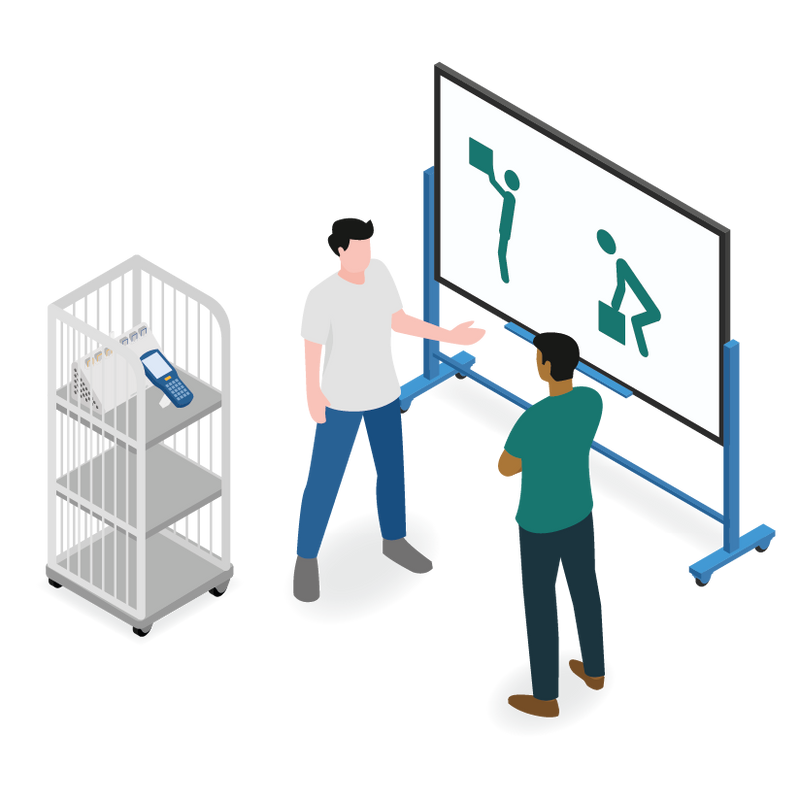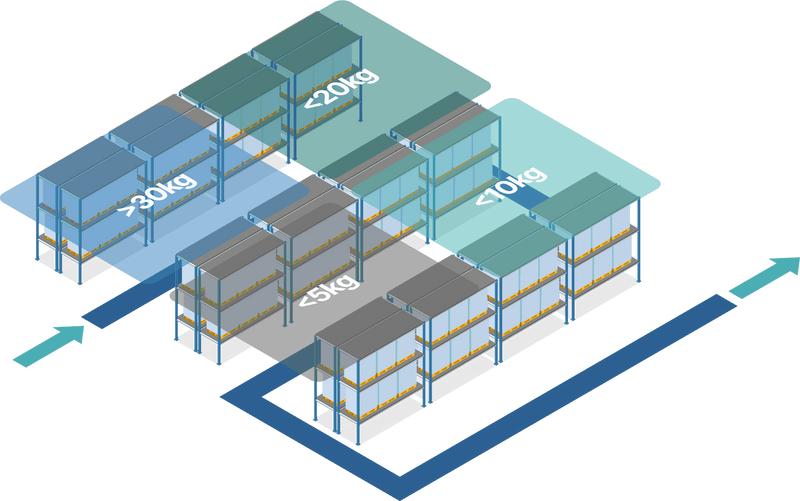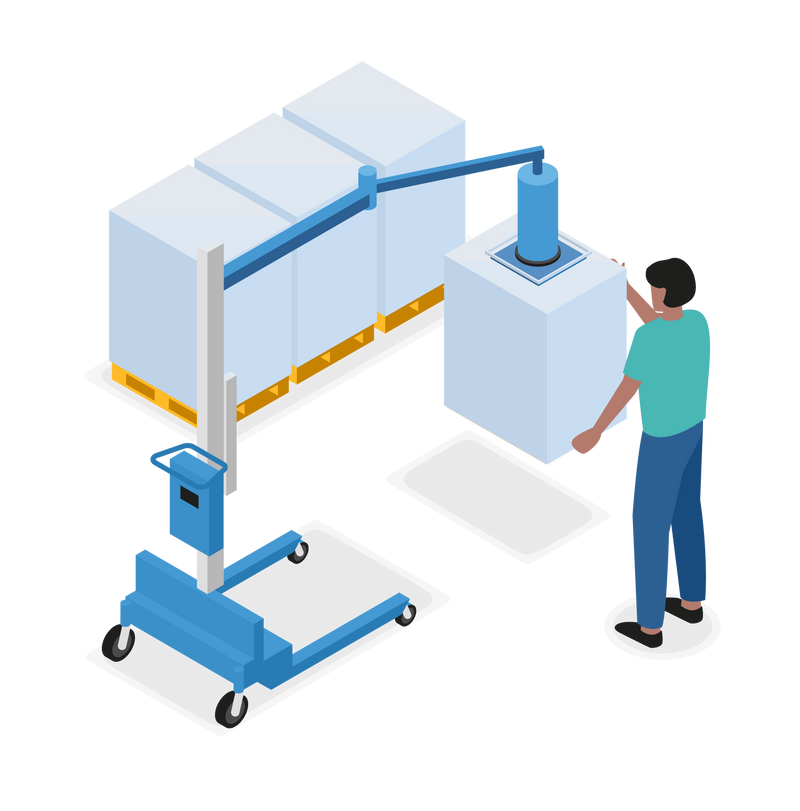1
Consideration of the Handled Load Weights
Handling in an ergonomically critical posture is to be regarded as hazardous to health in particular if additional weights are handled in the process.
A
Analysis of Master Data
The average weight of a unit can be calculated from the master data.
Note: At the beginning of the analysis it is useful to check the master data for extreme values. Incorrect units or poorly maintained data can lead to implausible outliers that can bias the average upwards or downwards.
B
Recording the Master Data
If master data is not available, it may be useful to create it. To do this, the weights and dimensions of the items need to be recorded. This process can be assisted with tooling.
C
Use Weight Data from Comparable Sites
If there is more than one location with a similar product range, the master data of this location can be used for the analysis.
2
Evaluation of the Ergonomic Load
Various methods can be used to evaluate ergonomic stress. One of the most common, for example, is the Key Indicator Method (KIM). Depending on the activity, there are various worksheets that can be used for the assessment.



-800x800.png)








